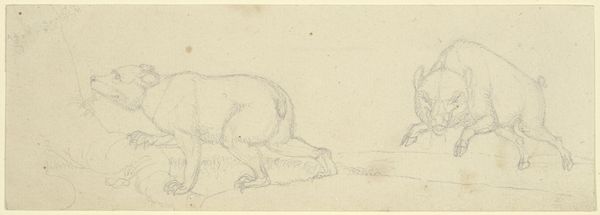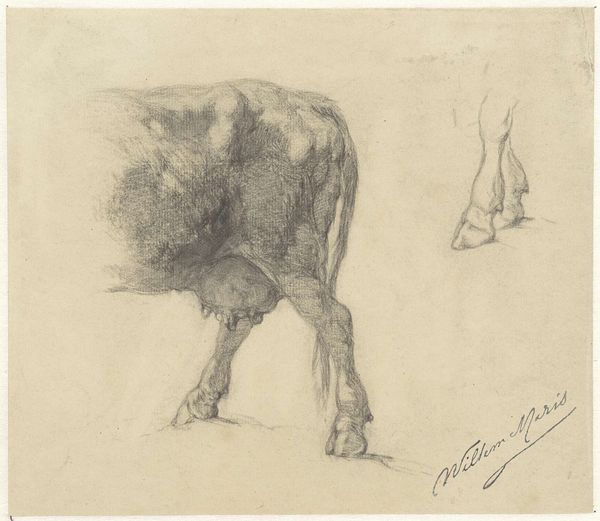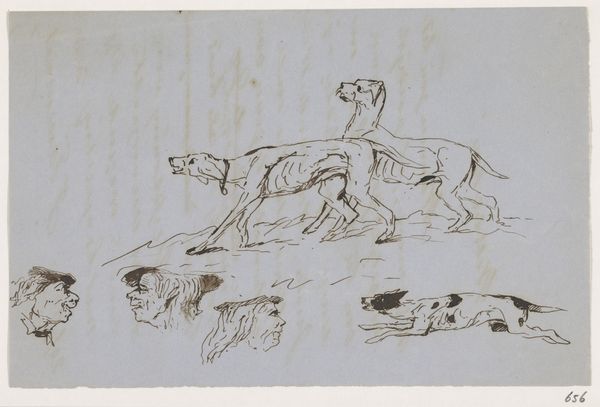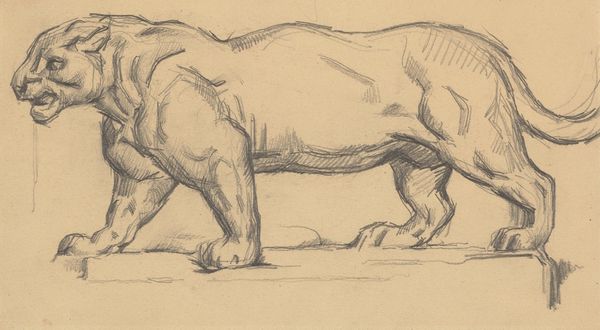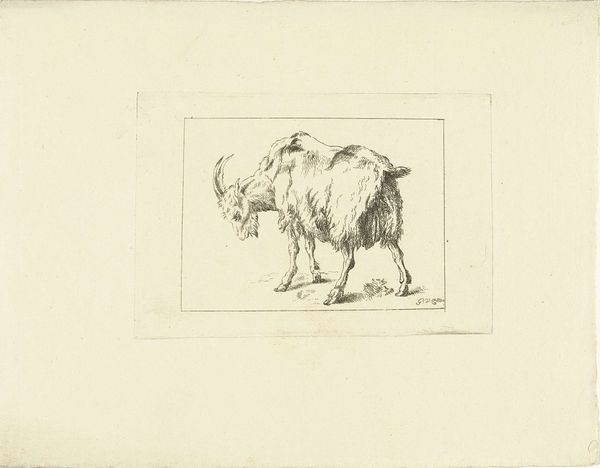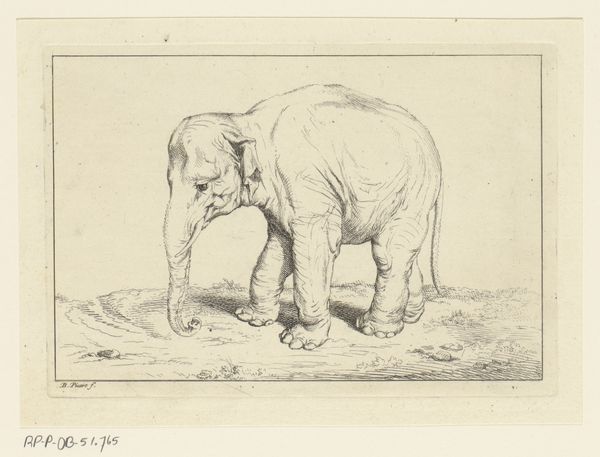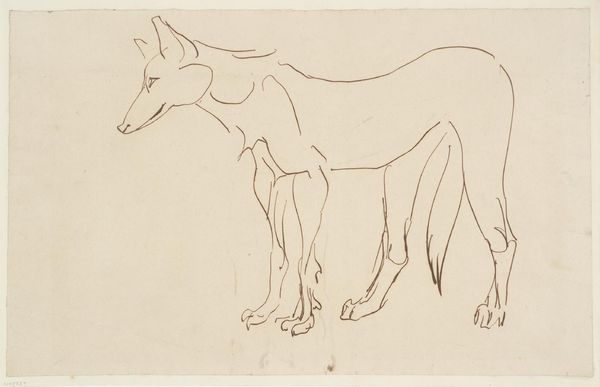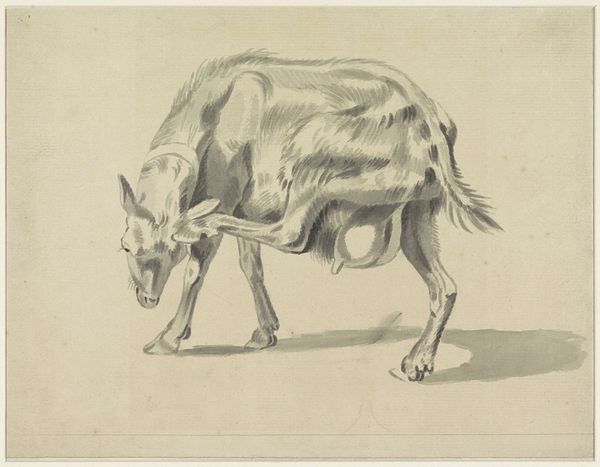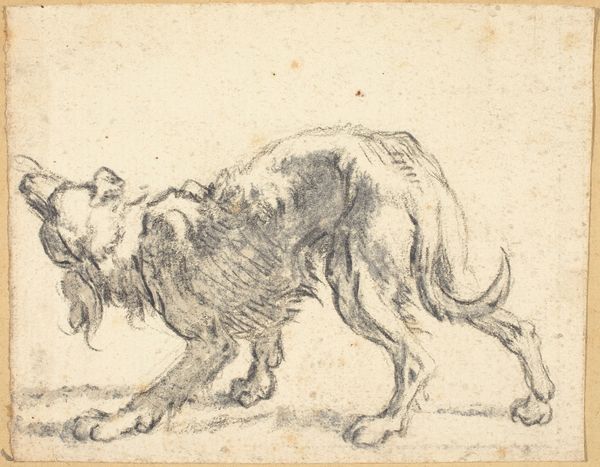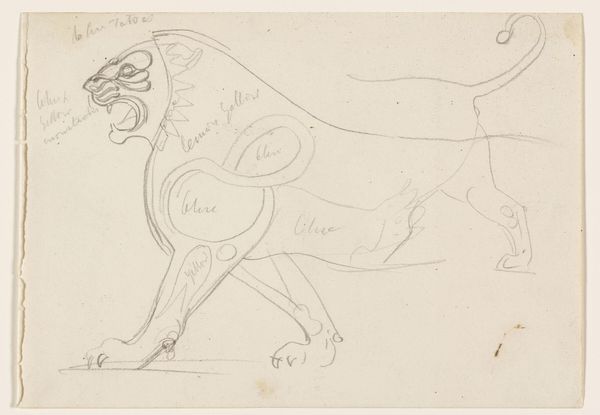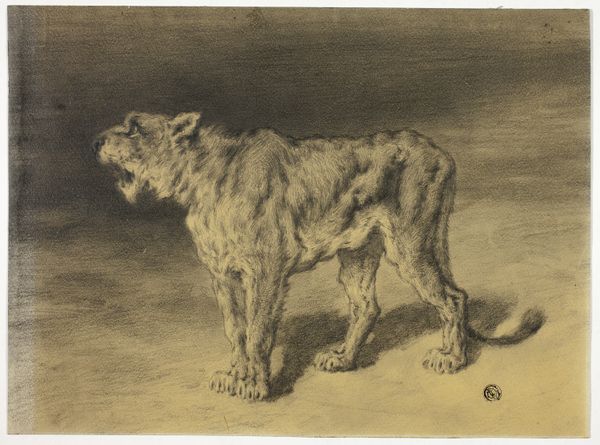
drawing, pencil
#
pencil drawn
#
drawing
#
impressionism
#
figuration
#
pencil
#
post-impressionism
Dimensions: 12 1/4 x 9 3/8 in. (31.1 x 23.9 cm)
Copyright: Public Domain
Curator: Looking at this drawing, “Monkey,” crafted in 1884 by Georges Seurat and housed here at the Metropolitan Museum of Art, I am immediately struck by the animal's stoic posture and its implicit representation of disenfranchised social groups of the era. Editor: It feels…fuzzy. Like a faded memory. I imagine Seurat observing this monkey in the Jardin des Plantes zoo, that ubiquitous smell of hay and old stone, then rushing home to try and catch the impression on paper before it dissolved completely. Curator: It’s rendered in pencil, and Seurat’s mastery of Conté crayon is evident even here. He evokes depth and form through subtle gradations of tone. And given his broader exploration of urban leisure and social alienation, the image raises pointed questions about the treatment of non-human animals and echoes of colonial practices. Editor: Totally. There's a quiet dignity about this creature, isn't there? It's as though he’s aware he’s on display and trying his best to remain composed. Also, the minimalist setting gives a strange focus, creating an image so far removed from natural habitats of that period that the viewer can feel how misplaced this animal actually is. It is as if the backdrop is symbolic of broader restrictions, of loss of freedoms imposed on individuals. Curator: Indeed. His gaze is direct but also resigned. Think of the surge in popularity for animal exhibitions throughout the late 19th century. It catered to burgeoning industrial wealth that allowed travel and introduced wider society to previously obscure fauna. In doing so it constructed specific modes of spectatorship and power. We have to critically reflect on the role of this lens, which effectively others and commodifies non-Western entities, animate and inanimate, I’d add. Editor: Wow. It makes you wonder what he was really thinking as he posed – if 'pose' is even the right word! Did he feel trapped? Homesick? Bored? I’m anthropomorphizing wildly, I know. All that to say, beyond Seurat’s technique, it’s that quiet, caged awareness that really haunts me in this image. Curator: Ultimately, this image demands of us that we go beyond merely appreciating the beauty, and address the wider ideological implications underpinning visual representation. Editor: And sometimes it is powerful simply because it can bring forward these emotional reactions. Curator: Indeed, by delving into our emotions, and intellect, we embrace the total richness of our experience.
Comments
No comments
Be the first to comment and join the conversation on the ultimate creative platform.

